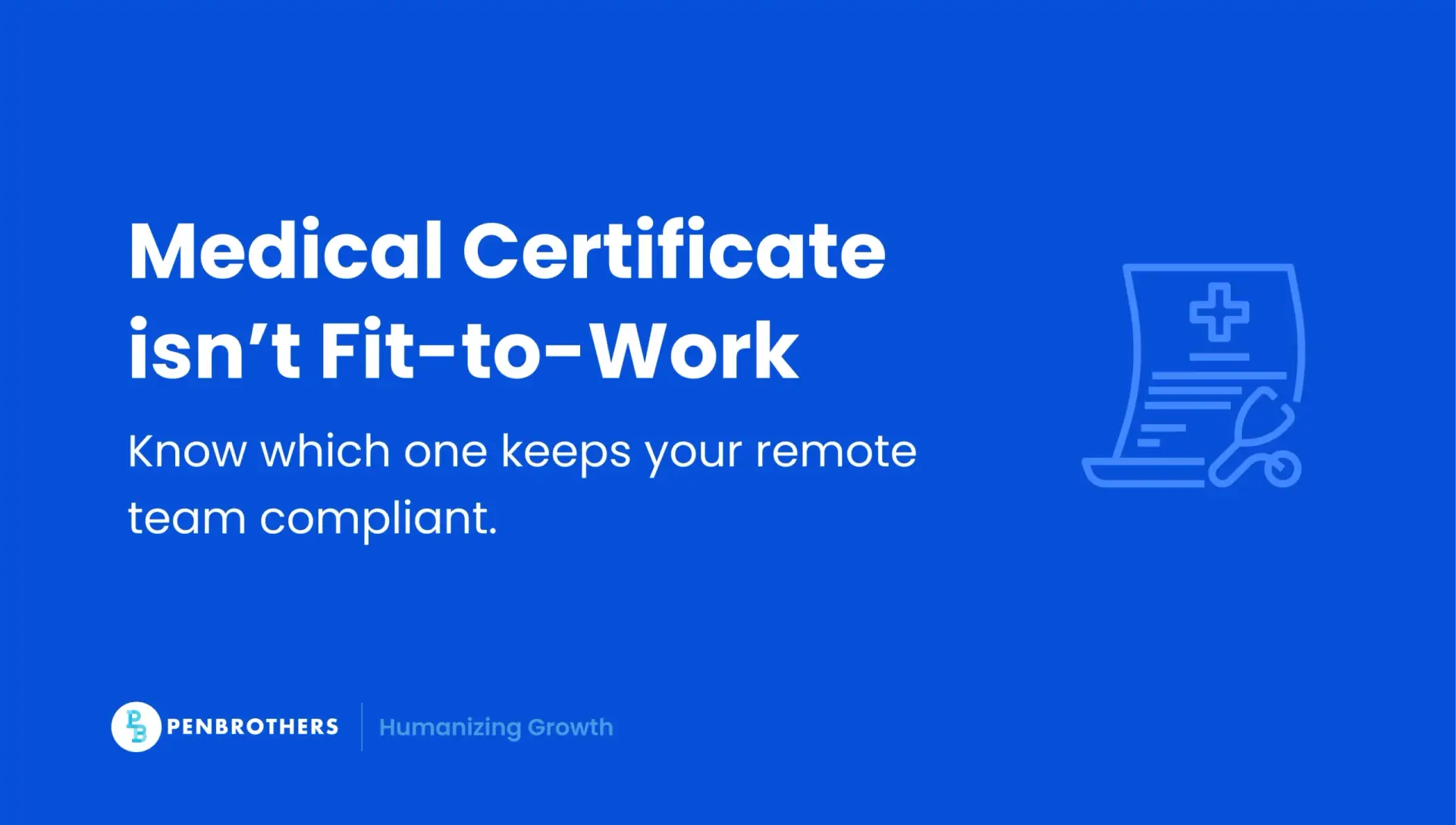What's Inside?
AWOL: Meaning, Implications, and Consequences for Remote Workers in the Philippines

AWOL isn’t just skipping the office. It can derail projects, damage trust, and create legal headaches, even for remote employees.
In a remote work setup, AWOL isn’t about leaving a physical workspace. It’s about disappearing from virtual platforms, missing deadlines, or failing to communicate without approval.
This guide explains what AWOL means for remote workers, the ripple effects it can cause, and actionable strategies for employees and HR teams to prevent, manage, and mitigate its consequences.
What AWOL Means in a Remote Work Context
AWOL, or Absent Without Official Leave, occurs when a remote worker:
- Fails to log in to required work systems for multiple days.
- Ignores communications via email, chat, or project management tools.
- Misses scheduled calls or deliverables without notice.
Unlike traditional office AWOL, remote absences may go unnoticed physically but still disrupt workflows and collaboration.
Examples:
- A team member doesn’t respond to emails or messages for three consecutive workdays.
- Skipping stand-up meetings without explanation.
- Ignoring updates in project management platforms.
Understanding AWOL in this context sets the stage for recognizing its implications for employees, employers, and teams.
Related reading: Medical Certificate versus Fit-to-Work: What Remote Workers Need to Know
Implications of AWOL for Remote Teams
AWOL affects everyone in the remote ecosystem.
For the Employee:
- Reputation damage: Marks of unreliability impact future opportunities.
- Loss of pay and benefits: Unused leave and bonuses may be forfeited.
- Legal liability: Employers may recover company property or pursue claims.
- Difficulty securing references: Managers cannot provide positive endorsements.
For the Employer:
- Operational disruption: Project delays and missed deadlines.
- Increased costs: Hiring temporary staff, paying overtime, or recruitment.
- Security risks: Data or devices may be left unsecured.
- Legal exposure: Mishandling AWOL cases can result in wrongful termination claims.
For the Team:
- Lower morale: Extra workload for colleagues.
- Distrust: Unexplained absences erode team cohesion.
- Burnout: Covering AWOL employees adds stress and fatigue.
For example, a remote marketing team missed two key campaign deadlines after a member went AWOL. The extra workload caused resentment and delayed other projects, showing the ripple effect of absenteeism.
Step-by-Step HR Process for Handling Remote AWOL Cases
Once AWOL is identified, HR must respond methodically:
- Document Initial Absence: Record missed logins, calls, and deliverables.
- Attempt Contact: Reach out via all available channels—email, chat, phone.
- Issue Notice to Explain (NTE): Set a clear deadline for the employee to respond.
- Document Everything: Maintain a complete record for compliance and legal purposes.
- Conduct Investigation or Hearing: Follow due process under Philippine labor law.
- Issue Notice of Decision: Communicate disciplinary action or termination if warranted.
- Secure Company Property & Access: Revoke logins, recover devices, and ensure digital security.
Tip: Use standardized templates for emails, NTE letters, and documentation logs to streamline processes and maintain consistency.
Preventive Strategies for Remote Teams
Prevention is always better than mitigation. Teams can reduce AWOL incidents with:
- Clear Remote-Specific Policies: Explicitly define AWOL for digital work.
- Regular Check-ins: Daily or weekly meetings to detect early disengagement.
- Project Management Tools: Track tasks without micromanaging.
- Early-Warning Protocols: Identify unresponsiveness before it escalates.
- Culture of Communication: Encourage transparency and timely notice for absences.
These strategies not only minimize operational risk but also support employee engagement and morale.
Cross-Border and Multi-Client Considerations
Remote workers often operate across time zones and multiple clients, which can complicate absence tracking.
HR teams should:
- Adapt workflows for international time differences.
- Track multiple reporting lines clearly.
- Document all absences consistently to avoid misunderstandings.
This ensures equitable handling and legal protection for employees and employers alike.
Legal and Compliance Considerations
Under Philippine labor law, AWOL carries strict requirements for due process:
- Notice: Employees must be informed of their alleged absence and given an opportunity to explain.
- Investigation: HR must conduct fair hearings and document all steps.
- Termination: Only after proper due process can employment be legally terminated.
Remote work agreements should clarify digital monitoring, communication expectations, and absence protocols, protecting both parties.
Employee Guidance to Avoid AWOL
Remote employees can protect themselves by:
- Communicating absences immediately, even if unexpected.
- Using leave (PTO, sick days, or flexible arrangements) properly.
- Documenting explanations or delays for accountability.
- Understanding that unresponsiveness is treated seriously in remote settings.
Clear communication and proactive behavior can prevent reputational or legal consequences.
Conclusion
AWOL is not merely a compliance issue. It’s a preventable risk that affects employees, teams, and organizations.
For remote work, managing AWOL requires:
- Structured HR workflows to address absences fairly and legally.
- Proactive preventive strategies to minimize unplanned absenteeism.
- Employee awareness and communication to protect reputations and maintain trust.
With clear policies, timely interventions, and consistent documentation, AWOL incidents can be minimized, keeping remote teams productive, secure, and engaged while maintaining legal compliance.
Frequently Asked Questions
Unauthorized absence or unresponsiveness from work platforms or deadlines.
Through login activity, project management updates, and communication platforms.
Loss of pay, termination, legal liability, and damaged professional reputation.
Document absence, attempt contact, issue NTE, follow due process, and secure access/property.
Only after proper investigation and due process.
Communicate proactively, use leave correctly, and document any unexpected absences.





